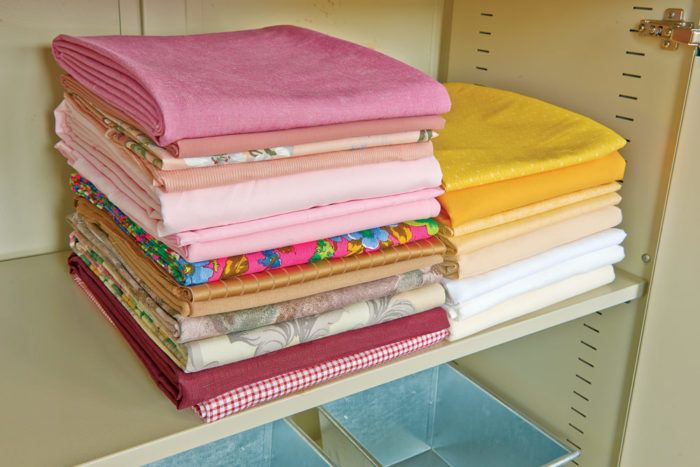
What the heck is that fabric, anyway?
Have you ever asked yourself that question? I have! Here’s a handy guide to a number of common types of garment fabrics on the market.
Batiste
Contents: Cotton, silk, polyester.
This fabric is very finely woven. It is frequently semi-sheer.
Uses: Lingerie and nightgowns, linings, interfacing. It is frequently used in heirloom sewing and baby clothes. It is machine washable or dry-cleanable.
Sewing Difficulty: Easy
Broadcloth
Contents: Cotton, silk, rayon, polyester.
Broadcloth gets its name from the fact that it was woven on broad-width looms. Way back when, most fabrics were woven on 27 inch wide looms. Broadcloth was woven on looms more closely resembling the modern 44 and 60″ widths. Broadcloth is also a generic term for a smooth, plain-weave fabric that is used for prints.
Uses: Shirting, dresses, sleepwear, casual wear. Depending on the fabric content, it is washable, handwashable and dry-cleanable.
Sewing Difficulty: Easy
Brocade
Contents: Just about any fiber you can think. Wools, cottons, silk, man-made fibers and blends.
This is a heavy, rich fabric made on jacquard looms to give it texture, woven with extra threads in multiple colors. It has a stiff hand and is often made with a satin finish and metallic threads.
Uses: Suits, sportswear, evening wear, bridal, accessories, home decoration. This fabric has a tendency to catch and snag easily, making lining a must. It is usually dry-clean only. It also has a tendency to ravel so make sure you finish seams when sewing with it.
Sewing Difficulty: Moderate to Difficult
Calico
Contents: Cotton.
This is an inexpensive, plain weave cotton that was originally made in Calicut (Calcutta), hence the name. It is usually printed.
Uses: Shirting, kids clothes. Machine washable. Wears well and is easy to sew.
Sewing Difficulty: Easy
Canvas
Contents: Cotton, cotton/poly blend.
This is a very stiff cloth, similar to drill and sailcloth, but lighter. It is a very durable cloth.
Uses: Tote bags, upholstery, lightweight jackets and coats. Easy to sew, but requires some patience because it can be stiff.
Sewing Difficulty: Easy
Challis
Contents: Cotton, silk, wool, rayon.
A very soft woven cloth, often with a somewhat brushed surface. Has a lovely drape making it suitable for flowing garments.
Uses: Dresses, separates, scarves. Depending on fabric content, washable or dry-clean.
Sewing Difficulty: Easy
Charmeuse
Contents: Silk, polyester, rayon, blends.
Very soft, drapey fabric with a lustrous face and a dull back side.
Uses: Dresses, eveningwear, scarves, blouses, pants. Hand wash or dry clean. Because it is so slippery, it can be difficult to cut and sew. I prefer to use very sharp shears or a rotary cutter to reduce distortion of the fabric.
Sewing Difficulty: Difficult
Chenille
Contents: Cotton, wool, polyester, blends.
A fabric with a fuzzy pile, often cut in patterns. Sheds when cut.
Uses: Robes, jackets, bedspreads. Machine wash. Make sure you finish your seams.
Sewing Difficulty: Easy
Chiffon
Contents: Silk, polyester.
Lightweight, sheer, plain-weave fabric made from twisted yarns. Very drapey with a lovely hand. Quite strong, despite its delicate appearance. Has a tendency to snag and pull easily.
Uses: Dresses, eveningwear, scarves, blouses, lingerie. Hand wash or dry clean. Like charmeuse, it is slippery and difficult to cut and sew. I recommend hand basting seams before stitching to reduce slippage.
Sewing Difficulty: Difficult
China Silk
Contents: Silk.
Lightweight, inexpensive, plain-weave silk fabric. Not very durable. Has a tendency to pull and tear at the seamlines. Very lightweight in most cases. Handwash or dry clean. Some linings labelled “china silk” are made of polyester.
Uses: Linings, blouses, men’s boxer shorts.
Sewing Difficulty: Moderate
Coating
Contents: Wool, polyester, cashmere, mohair, blends.
Heavyweight fabrics, ranging from flannels to jacquard styles to boucle. Typical examples include melton, boiled wool, camel’s hair, heavy tweeds, etc.
Uses: Coats, jackets. Can be pre-fused. Dry-clean recommended in most cases.
Sewing Difficulty: Moderate to difficult
Corduroy
Contents: Cotton, cotton blends.
A rugged cloth woven with vertical ribs, or “wales”. Originally worn by servants of the French monarchy (corps du roi, hence the name). This is a very durable cloth that can be plain, or nowadays is embellished with printing or embroidery.
Uses: Pants, coats, jackets, shirts, kids’ clothing. Machine washable. Serge seams to reduce shedding of fibers.
Sewing Difficulty: Easy
Cotton/Lycra Knit
Contents: Cotton and Lycra blended together, usually 94 to 98 percent cotton with 2 to 6 percent Lycra, to give more stretch and elasticity to cotton knits.
This fabric has a very good “memory”, and will retain its shape better and longer than plain cotton knits. Available in a wide variety of colors and prints.
Uses: T-shirts, dresses, kids’ clothing, underwear, loungewear.
Sewing Difficulty: Easy
Cotton/Lycra Twill
Contents: Cotton twill blended with a small percentage (about 2 to 3 percent) of Lycra to give stretch and elasticity.
This fabric has gained tremendously in popularity in the last several years, thanks to its forgiving nature on the body and its rugged durability. Available in a wide variety of colors and prints.
Uses: Sportswear, jackets and coats, kids’ clothing, dresses. Machine washable. Use a stretch needle to avoid skipped stitches.
Sewing Difficulty: Easy
Crepe
Contents: Silk, rayon, cotton, wool, polyester, blends.
This fabric has a distinctive, crinkled surface texture, thanks to the very tightly twisted yarns used to make it. Lightweight crepes include georgette. Midweight crepes include wool crepes seen in dresses and sportswear. Heavyweight crepe includes four-ply, in which four yarns are twisted together to create each yarn that is woven into the crepe. Very luxurious, and wears like iron.
Uses: Dresses, sportswear, evening and bridal. Hand wash or dry clean.
Sewing Difficulty: Easy to moderate.
Crepe de Chine
Contents: Silk, polyester, rayon, nylon, acetate, blends.
Very soft, drapey fabric with a lustrous face and back side. Crepe yarns are used both for the warp (lengthwise threads) and the weft or filling threads. Used to be very difficult to find, but now it’s one of the most common types of silk available on the market.
Uses: Dresses, blouses, shirts, lingerie. Hand wash or dry clean.
Sewing Difficulty: Moderate
Damask
Contents: Wool, cotton, linen, silk, polyester, and blends.
A reversible fabric woven on jacquard looms. Flatter and more durable than its cousin, brocade. Usually woven in a solid color. Damask is one of the oldest fabrics.
Uses: Shirts, dresses, jackets, home decor. Machine- or hand-washable, some (woolens) require dry-cleaning.
Sewing Difficulty: Easy to moderate.
Denim
Contents: Cotton, cotton blends.
A rugged twill cloth. Gets its name from the town Nimes in France, where it was first made. The cloth was originally called Serge de Nimes in French.
Uses: Possibly the most popular cloth in the world, denim is used for everything from jeans to home-decor. Machine washable.
Sewing Difficulty: Easy
Doubleknit
Contents: Cotton, wool, polyester, nylon, blends.
A medium to heavy fabric, knitted on a machine with two sets of needles. Both sides of the fabric look the same, so the fabric is reversible. Hand wash or dry clean. Use ball-point needles.
Uses: Dresses, pants, coats, jackets.
Sewing Difficulty: Easy
Dupioni
Contents: Silk, polyester, blends.
Lustrous, light to medium-weight fabric made from a tight, plain weave that has slubbed yarns on the cross-weave or weft. These slubs, or irregular threads, give dupioni its characteristic texture. That texture also means that dupioni has a tendency to be weak on seamlines that take a lot of stress.
Uses: Dresses, pants, jackets, blouses, eveningwear, bridal, home decor. Hand wash or dry clean. You can also machine wash dupioni as long as you machine wash the fabric before sewing with it.
Sewing Difficulty: Easy
Faille
Contents: Silk, cotton, wool, polyester.
This firm fabric has distinct ribs on the crosswise grain. The ribs can be of equal or varying widths. Dry clean only. Use as fine a needle as possible – tends to leave holes.
Uses: Dresses, shirts, blouses, evening and bridal wear.
Sewing Difficulty: Easy to moderate.
Fake Fur
Contents: Polyester. Usually a knitted fabric with long pile on one side designed to look like fur. Dry clean only. Use a comb to pull fur out of seams.
Uses: Coats, jackets, accessories. Use with-nap layouts.
Sewing Difficulty: Moderate
Flannel
Contents: Cotton, wool, cotton blends.
A woven fabric that is brushed, producing a lofty finish that is warm and soft. Ranges in weight from lightweight to heavyweight. Comes in a large variety of solids and prints. All-cotton flannel has a tendency to shrink. Machine washable. Wool flannel may require dry-cleaning.
Uses: Shirts, dresses, jackets, sleepwear, loungwear, kids’ clothing, home decor.
Sewing Difficulty: Easy
Fleece
Contents: Polyester.
Fleece is the generic term for a fabric that is knitted from long polyester fibers and then processed to produce a lofty, warm fabric. The fibers used are recycled, in many cases, from plastic bottles. There are a number of types of fleece: microfleece, 100 and 200 denier weight, wind-blocking, wicking and others. Brand names include Polartec, Polarfleece, Powerdry, Windblock, Alpine Fleece and many others. Technical fleeces may require special needles (Microtex or titanium).
Uses: Sportswear, outerwear, exercise wear, sleepwear, technical garments for specialized applications like SCUBA diving, mountain climbing, skiing, hiking and others.
Sewing Difficulty: Moderate
Gabardine
Contents: Wool, cotton, blends.
Firm twill weave that is generally quite durable. Usually found in midweights. Depending on the fabric content, washable or dry-cleanable. Leaves marks if you have to rip out seams.
Uses: Coats, including raincoats, pants, jackets, menswear.
Sewing Difficulty: Moderate
Gauze
Contents: Cotton, wool, silk, poly/blends.
Sheer, open-weave fabric.
Uses: Casual wear, dresses. Machine washable, but cotton gauze shrinks excessively. Silk and wool gauze should be dry cleaned to maintain hand.
Sewing Difficulty: Easy to moderate.
Georgette
Contents: Silk, polyester, rayon, blends.
Sheer crepe fabric. Often made from twisted yarns, similar to crepe.
Uses: Evening wear, blouses, dresses, scarves, lingerie.
Sewing Difficulty: Easy to moderate.
Interlock
Contents: Cotton, wool, poly/blends.
Closely woven knits that look the same on both sides. Can be difficult to distinguish from jersey. Generally a heavier knit than jersey.
Uses: T-shirts, dresses, kids’ clothing, underwear, activewear.
Sewing Difficulty: Easy
Jersey
Contents: Cotton, wool, rayon, poly/blends, silk.
Lightweight plain-knit fabric with ribs on the face and purl stitches on the back (in fine jerseys, the two sides can be difficult to tell apart). Good give and recovery. Generally soft and easy to wear. Wool jersey can be handwashed or dry-cleaned. Silk jersey should be dry-cleaned. Other jerseys generally stand up to machine washing.
Uses: Dresses, tops, kids’ clothes, underwear.
Sewing Difficulty: Easy to moderate.
Lace
Contents: Cotton, nylon, polyester, silk.
Comes in many different styles. Alencon, Battenberg, beaded, Chantilly, Cluny, guipure, stretch lace, Valenciennes and Venise lace are common types. Costs range from quite inexpensive for stretch lace and allover lace to thousands of dollars for beaded and other types. Comes in many widths ranging from 1/4″ trim to 8″ galloons to 54″ wide fabrics. Most stretch lace is machine washable. Dry-clean any others to be safe.
Uses: Evening, bridal, trims, dresses, lingerie, nightgowns, baby clothes.
Sewing Difficulty: Easy to difficult, depending on the type of lace
Linen
Contents: linen, blends.
A sturdy fabric made from the flax plant. You can also find linen made from the hemp plant (generally labeled “Hemp” rather than linen). Strong, plain or damask weaves. Comes in weights from handkerchief linen to very heavyweight. Machine wash, handwash or dry clean.
Uses: Blouses, dresses, sportswear, outerwear, home-decor.
Sewing Difficulty: Easy
Muslin
Contents: Cotton, cotton blends.
An inexpensive fabric that is usually used for making sample garments. Machine wash.
Uses: Sample garments, press cloths.
Sewing Difficulty: Easy
Organza
Contents: Silk, rayon, polyester.
A crisp, stable, plain-weave sheer fabric. Handwash or dry clean.
Uses: Linings, underlinings, blouses, dresses, evening and bridalwear, presscloths, curtains.
Sewing Difficulty: Easy to moderate.
Pique
Contents: Cotton, cotton blends.
A light to mid-weight weave with a raised design, usually in a small geometric pattern. Has a tendency to shrink, so buy extra and pre-wash.
Machine washable.
Uses: Dresses, tops, kids’ clothes, sportswear, jackets, handbags.
Sewing Difficulty: Easy
Raw Silk
Contents: Silk
Rough weave, comes in a number of weights from lightweight silk noil to very heavyweight silk tussah. Many of the looser weaves ravel easily. Prices range from very inexpensive to $100+ per yard. Many dyed raw silks have a tendency to bleed their dyes, so wash separately or dry clean.
Uses: Sportswear, pants, jackets, tops, dresses, home-decor.
Sewing Difficulty: Easy to moderate.
Satin
Contents: Silk, rayon, acetate, nylon, polyester, cotton, wool.
A tightly woven fabric with a lustrous, smooth face. Dry-clean only. Leaves marks if you remove stitching.
Uses: Bridal and evening wear, jackets, pants, shirts, home-decor.
Sewing Difficulty: Easy to difficult, depending on fiber content.
Slinky Knit
Contents: Acetate/spandex.
A very stretchy knit that has gained popularity in recent years. Crepe-like texture, often with narrow ribs, and heavy, drapey characteristics make this a favorite of designers. Has a tendency to stretch if left on a hanger. Store garments folded. Wrinkle resistant. Machine washable. Tends to wander during cutting. Use very sharp shears. I don’t recommend rotary cutters with slinky.
Uses: Dresses, separates, eveningwear.
Sewing Difficulty: Easy to moderate.
Stretch Velvet
Contents: Polyester, sometimes blended with spandex.
Knit fabric with a napped side. Sometimes referred to as velour. Finishes include plain, hammered or panne, and burnout (the pile is removed in a pre-set design). Good stretch, good recovery. Machine wash or dry clean.
Uses: Sportswear, dresses, eveningwear.
Sewing Difficulty: Moderate
Suiting
Contents: Wool, cashmere, silk, rayon, polyester, blends. Medium to heavyweight fabrics used to make suits and jackets. Includes textures such as tweed, herringbone, boucle, flannel and worsted. Usually dry-clean only.
Uses: Suits, sportswear, dresses.
Sewing Difficulty: Easy to moderate.
Taffeta
Contents: Silk, polyester, rayon, nylon, acetate, blends. Smooth, plain-weave fabric with a crisp hand with a characteristic rustle. Delicate. Creases easily, and doesn’t wear well, especially at creased or stitched areas. Underline with organza or something similar for best results. Dry clean only. Leaves marks if you remove stitching.
Uses: Evening, bridal, dresses, sportswear.
Sewing Difficulty: Moderate to difficult
Terrycloth
Contents: Cotton, rayon, blends. Pile fabric with uncut loops on one or both sides. Can be woven or knit. Also called towelling. Machine wash. Tends to shed at cut edges.
Uses: Robes, beachwear, spa wraps, casual garments.
Sewing Difficulty: Easy
Tweed
Contents: Wool, silk, polyester, blends. A rough-textured fabric with surface slubs. Comes in a number of types, including herringbone, houndstooth and Donegal. Originally woven by the peoples who lived near the Tweed River between Scotland and England. Dry clean.
Uses: Suits, coats, sportswear, dresses, accessories.
Sewing Difficulty: Easy
Twill
Contents: Cotton, wool, silk, poly/blends.
Tightly woven fabric with a diagonal weave. Machine wash cottons. Dry clean silks or wools.
Uses: Pants (chinos are a twill weave, as is denim), jackets, dresses, home decor.
Sewing Difficulty: Easy
Velvet
Contents: Silk, rayon, polyester.
Luxurious fabric with a short pile on a woven background. Can be very lightweight to mid-weight. Silk velvet is usually about 75 percent rayon and 25 percent silk. Dry clean only. Requires special care when pressing or you risk pressing the nap down.
Uses: Formalwear, dresses, tops, pants, jackets.
Sewing Difficulty: Difficult



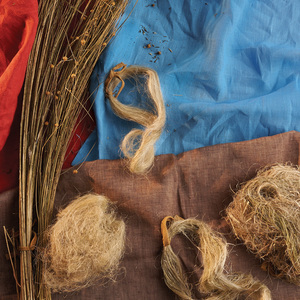
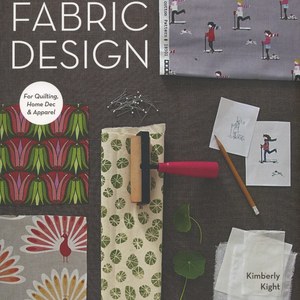
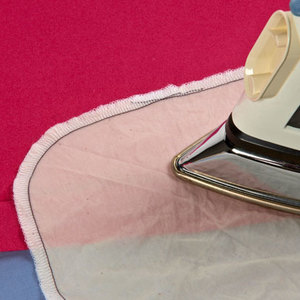







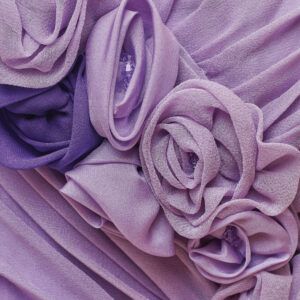

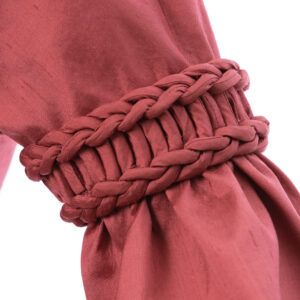

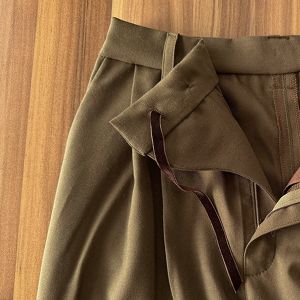




















I need advice on what kind of washable lining to use with corduroy, and polar fleece. I'm sewing a winter parka. The ruff is of faux fur. I will make the ruff detachable so the main body is washable and can dry clean the ruff.
Awsome!
Good one!
Lovely!
fantastic
why is the weft in modern fabrics, 'stretchy'?
Hi PendaticPatchWorker - It's not true of all modern fabrics, however, there are more woven fabrics now available with a percentage of Lycra for stretch. See the entry for Cotton/Lycra Twill. Denim is another fabric frequently offered in stretch versions. Contemporary consumers find garments with some “give” to be more comfortable and appealing.
When you list a fabric, it said the name such as "Twill" then the contents: "Cotton, wool, silk, poly/blends". Does that mean that various twill fabrics can contain cotton, wool, silk or poly/blends or all of them do? I'm thinking it's the former. My suggestion would be to "List various contents:" instead of just "Contents:".
Also aren't "Cotton, polyester, rayon and knit" types of fabrics in their own right?
The best way I remember when talking about fabric is that it has a first and last name: the fiber and the way it’s made. So there’s silk twill, cotton twill, wool jersey, rayon jersey, silk taffeta, etc.
Hi, dsantil71.
You're correct that the "Contents" sections generally list the possible fiber types a particular fabric may contain. They may have one or more of the listed fiber types.
Cotton, polyester, and rayon are fiber types, and all can come in a wide range of fabric weaves and knits.
Carol J. Fresia, Threads Senior Technical Editor
Love this list, it is very helpful.
One question: What is considered scuba fabric? I'm not just talking about the fabric used to make the scuba diver garments, but the fabric that is used for athletic wear...even bridal fabric that is considered scuba.
Lawn was left off the list?